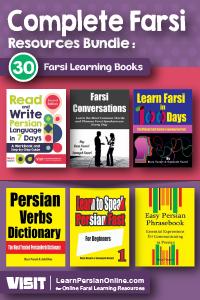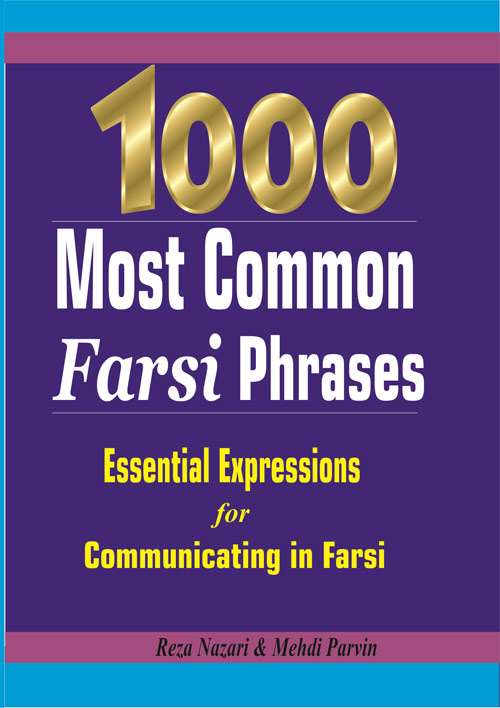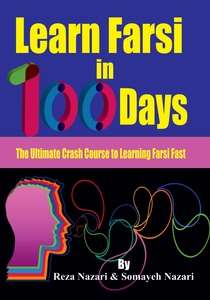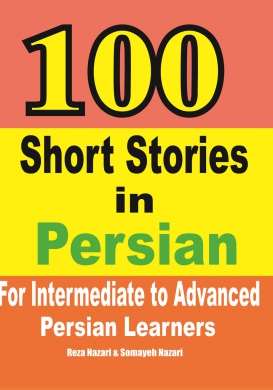
If you are like other Persian learners, you have been studying Persian for years. You have learned Persian grammar for years and years. You already have a vocabulary of around 500 Persian words. You know how to read and write well in Persian. You understand what native Persian speakers say. But you can’t speak fluently in Persian!
Today, we are going to discuss some techniques for how you can become fluent in Persian without studying grammar. We hope that these techniques help you to speak correctly Persian effortlessly and naturally. These methods will also help you immerse in the Persian language and develop confidence in speaking Persian.
Most importantly, these techniques are practical things you can try in your now time without the help of a Persian tutor or trainer.
Best Farsi Learning Resource!
1. Use Persian Audiobooks instead of textbooks

Let’s be honest – some textbooks are boring and unengaging. Textbooks are useful when you are learning history or biology but when it comes to learning foreign language textbooks add little value. Some Persian language textbooks have fake «dialogues» that maybe never really happen in real life. But some textbooks are good and useful. Because they teach you the phrases that native Persian speakers use in their daily lives. Most phrases and expressions used in these dialogues/role plays are natural.
Also, textbooks have grammar rules which can be good or bad. Because it can confuse you and you don’t understand anything about grammar. But if it explains grammar well, it can help you learn grammar and speak Persian better.
Persian audiobooks, however, are much better because they are written for native Persian speakers. Persian audiobooks are read by native Persian speakers, for native Persian speakers. You will hear the natural pronunciation and slang expressions more commonly used by native Persian speakers.
Additionally, Audiobooks are a good way to learn new vocabulary. By learning with your ears, you learn new Persian words and you learn their correct pronunciation. Actually, the learning process is more active. Improving your listening skills indirectly helps you improve your Persian speaking.
Lastly, Persian audiobooks allow you to immerse yourself in the Persian language in a very convenient way. For example, if you have a long commute, listen to an audiobook while driving or when you are on the bus! You will be improving your Persian without spending any extra time.
2. Grow your Persian vocabulary through use, NOT cramming

Are you wasting hours and hours cramming the dictionary but finding that you can’t recall those words when speaking in Persian?
Have you been using flashcards and memorizing various Persian word lists but find yourself in situations where the «right word does not come» when speaking Persian?
There is a big difference between knowing the meaning of Persian words and being able to use them correctly in real-life situations. Technically speaking, this is the distinction between active vocabulary and passive vocabulary. Active vocabulary is simply the words that you are able to use freely. But passive vocabulary consists of Persian words you know but that you don’t/can’t use freely.
The trick to becoming fluent in Persian is to expand and grow your active vocabulary. People who are truly fluent in Persian don’t get stuck looking for the right word. It comes, naturally.
So how you can grow your active vocabulary? The key is to speak Persian a lot. Practice speaking as much as possible, preferably with native Persian speakers. This is one of the best ways your brain gets used to using different words and putting them together in sentences, in real time.
The “knowledge” you get from having real conversations with native Persian speakers is a lot more powerful than any other method of learning Persian. You will learn many things that you can’t learn through textbooks – the right pace to speak Persian, where to pause between sentences, which sounds to stress/de-stress, etc. by practicing Persian with native speakers.
one of the most effective ways to become fluent in Persian is by practicing with native speakers.
Our courses:
- Beginners Complete Persian Course
- Intermediate Complete Persian Course
- Advanced Complete Persian Course
3. Find a teacher who lets you speak Persian a lot

Do you want a Persian teacher or a conversation partner? Do you want a teacher who corrects you all the time or a teacher who allows you to speak Persian without interruption? Do you want a Persian teacher who teaches grammar and vocabulary or a teacher who gives me conversation practice?
All those are important questions to ask before picking a Persian course/Persian tutor.
Whatever direction you go with, try to get a Persian teacher who gives you enough opportunities to speak in Persian during class. If your teacher interrupts and corrects you all the time, you will not get enough time to speak Persian. You will lose confidence and be afraid to speak Farsi.
Please think and decide whether you are concentrating on accuracy or fluency. If your goal is to become more accurate in using Persian, pick a Persian teacher who teaches a lot of grammar. But if your goal is to become more fluent, you have to pick a conversation partner style teacher who gives you more opportunities to speak Persian in class.
How to learn grammar naturally?
If you want to develop the feeling of correctness, you need to do what native speakers did when they learned Persian: get a ton of exposure to the language.
If you regularly hear and read Persian you can partly understand, your brain will naturally learn to recognize patterns, and also your brain also becomes familiar with different patterns so you’ll quickly be able to tell whether a sentence is correct or not.
It takes lots of time, but you can accelerate this process by using software like Anki.
In fact, Anki is software that’ll allow you to create virtual flashcards for better learning.
One of its pros is that the software will then tell you when to study your flashcards so you quickly memorize them.
Step1: Find example sentences
Let’s say you want to learn the Persian present tense.
The first step is, you should find lots of example sentences using the present tense. These sentences should be:
- Useful (can you imagine saying that sentence one day?)
- Not too long
- Correct (make sure the sentence was written by a native Persian speaker)
Step2: Create flashcards
When you have your sentences, open Anki and add them with their translation.
If you’ve audio to go with the sentence, that’s even so much better!
Step3: Please open Anki every day and study
Now all you have to do is open the Anki application every day and review your sentences.
After a while, you’ll naturally be able to tell when something is correct and when is incorrect.
Try our Persian classes with native Persian teachers
Special Offers!
by: Learn Persian Online Team about (category: Blog)

















What people say about "3 Tricks to Learn Persian Without Studying Grammar"?
No one replied yet.